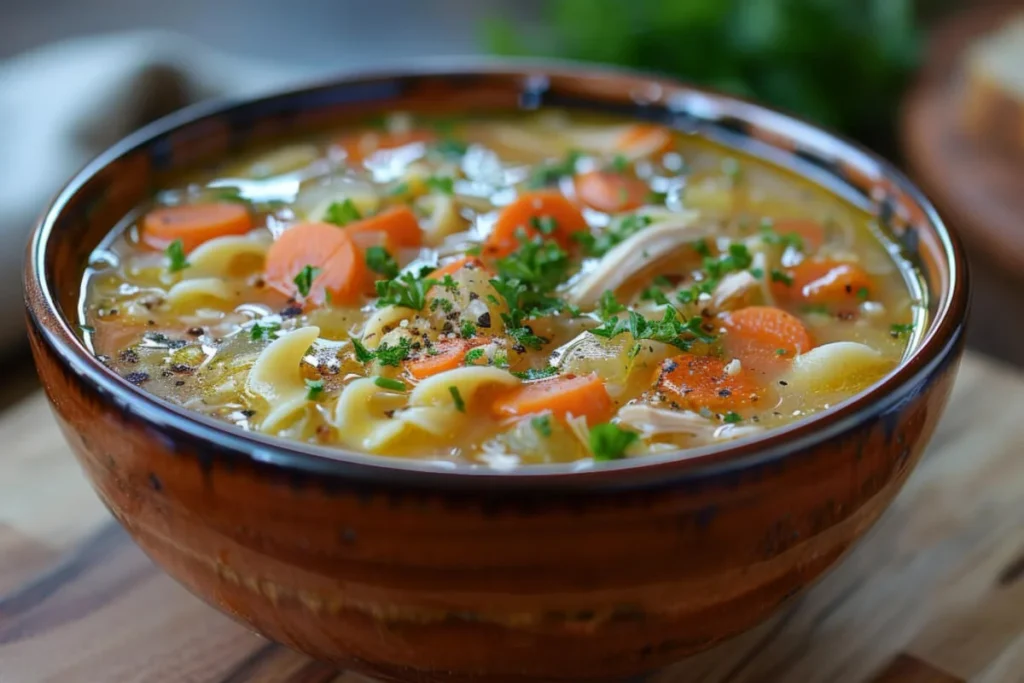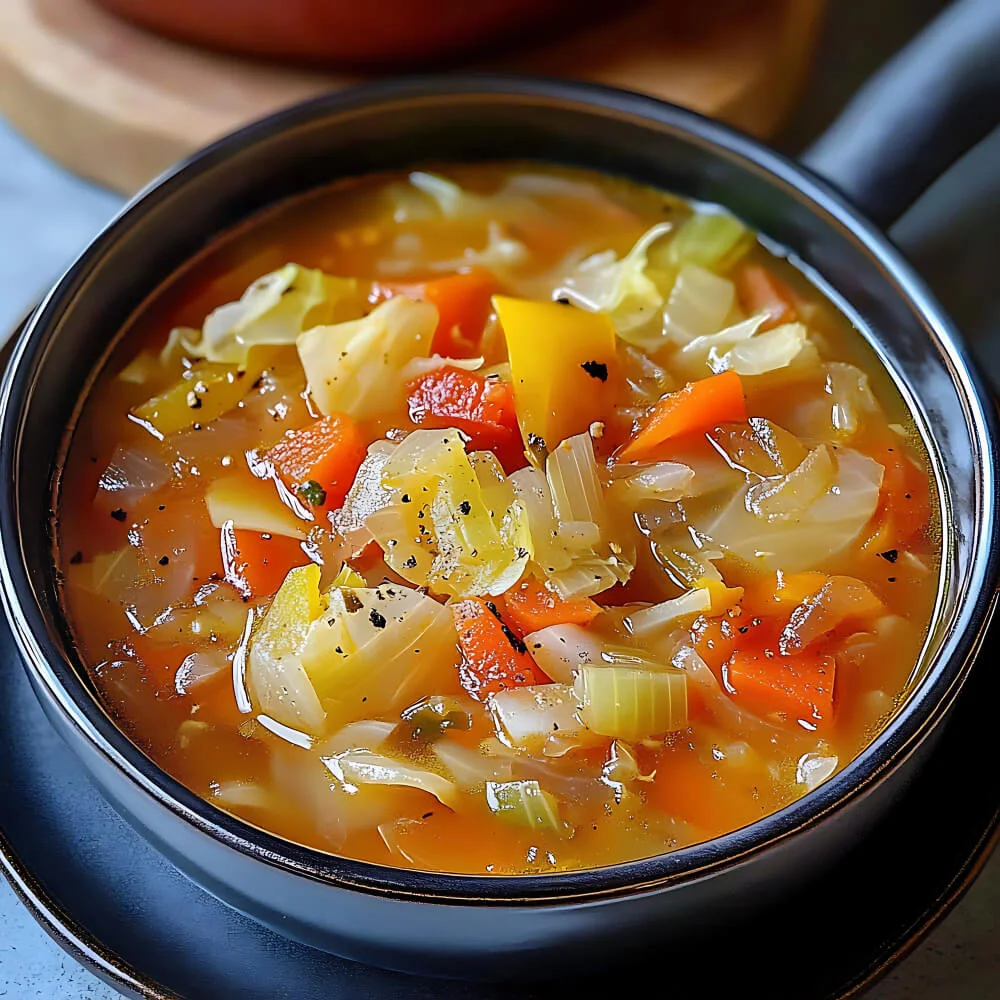
Introduction
What Is Village Soup?
Village Soup is a rustic, hearty dish that embodies the essence of communal cooking. Made with simple, locally sourced ingredients, it’s a flexible recipe that reflects the culinary traditions of rural communities. Village Soup often includes a mix of seasonal vegetables, grains, legumes, and herbs, making it a nourishing meal for families to share.
Historical Origins of Village Soup
Village Soup dates back centuries, originating in agrarian societies where resources were shared and meals were communal. It was traditionally prepared in large pots over open fires, with each household contributing ingredients. This practice not only reduced waste but also fostered a strong sense of community.
Cultural Significance of Village Soup
Village Soup represents more than just sustenance; it symbolizes togetherness and the bond of community. It has been a staple in many cultures, from European stews to African and Asian communal broths. The adaptability of Village Soup ensures that each version carries the unique flavors and traditions of its region.
Ingredients for Village Soup
Core Ingredients for an Authentic Taste
- Base: Broth or stock (vegetable, chicken, or beef) forms the foundation.
- Legumes: Lentils, beans, or peas for protein and texture.
- Grains: Barley, rice, or pasta add heartiness.
- Aromatics: Onions, garlic, and leeks enhance flavor.
- Herbs and Spices: Thyme, bay leaves, parsley, and black pepper are common additions.
Seasonal Vegetables and Additions
- Spring: Asparagus, peas, and fresh herbs.
- Summer: Zucchini, tomatoes, and bell peppers.
- Autumn: Squash, carrots, and sweet potatoes.
- Winter: Cabbage, kale, and root vegetables.
Substitutions for Modern Kitchens
- Gluten-Free: Use quinoa or gluten-free pasta instead of barley or wheat.
- Vegan: Opt for vegetable broth and skip any meat or dairy additions.
- Quick Prep: Use pre-cooked beans and frozen vegetables to save time.
How to Make Village Soup
Traditional Cooking Methods
Village Soup was traditionally cooked over an open fire in large communal pots. Slow simmering allowed flavors to develop and ingredients to tenderize. Today, this can be replicated with slow cookers or large Dutch ovens.
Step-by-Step Preparation Guide
- Prepare Ingredients: Chop vegetables, rinse grains, and soak legumes if needed.
- Sauté Aromatics: In a large pot, heat oil and sauté onions, garlic, and leeks until fragrant.
- Build the Base: Add broth, herbs, and legumes to the pot. Bring to a simmer.
- Add Vegetables: Incorporate harder vegetables first, followed by softer ones later in cooking.
- Simmer and Season: Cook until grains are tender and flavors meld. Adjust seasoning to taste.
- Serve: Ladle into bowls and garnish with fresh herbs or grated cheese.
Common Pitfalls and How to Avoid Them
- Overcooked Vegetables: Add softer vegetables later to maintain their texture.
- Underseasoning: Taste and adjust seasoning throughout the cooking process.
- Too Thick or Thin: Adjust consistency by adding broth for thinning or mashing beans for thickening.
Variations of Village Soup
Regional Variations Around the World
- French Pot-au-Feu: A slow-simmered stew with root vegetables, beef, and aromatic herbs.
- Italian Minestrone: A vegetable-packed soup with pasta or rice, often flavored with Parmesan.
- Moroccan Harira: A spiced soup made with lentils, chickpeas, and tomatoes, often served during Ramadan.
- Chinese Hot Pot: A communal dish where ingredients like leafy greens, tofu, and meats are cooked in a simmering broth at the table.

Vegetarian and Vegan Options
- Vegetarian Village Soup: Skip the meat and use vegetable stock with plenty of seasonal vegetables, beans, and grains.
- Vegan Creaminess: Blend a portion of the soup to create a creamy texture without dairy, or add coconut milk for richness.
- Plant-Based Protein: Incorporate tofu, tempeh, or legumes like chickpeas and lentils.
Protein-Packed Additions
- Chicken or Turkey: Shredded meat adds lean protein and complements hearty vegetables.
- Beef or Lamb: For a rich, robust flavor, add cubed or ground meat.
- Seafood: Include shrimp, fish, or mussels for a coastal-inspired variation.
- Eggs: Add poached eggs or stir in whisked eggs for extra protein and a velvety texture.
Nutritional Benefits of Village Soup
Health Benefits of Key Ingredients
- Vegetables: High in vitamins, minerals, and antioxidants, supporting overall health.
- Legumes: A great source of plant-based protein, fiber, and complex carbohydrates.
- Grains: Provide sustained energy and dietary fiber for digestive health.
- Herbs and Spices: Rich in phytonutrients, they enhance flavor and promote wellness.
Low-Calorie, High-Nutrient Meal
Village Soup is naturally low in calories while being nutrient-dense. Its blend of vegetables, grains, and legumes makes it a balanced meal that’s filling and wholesome without unnecessary fats or sugars.
Modifications for Special Diets
- Low-Sodium: Use homemade broth and limit added salt. Enhance flavor with herbs, garlic, and spices.
- Gluten-Free: Substitute barley or wheat with rice, quinoa, or gluten-free pasta.
- Keto-Friendly: Focus on low-carb vegetables like zucchini and spinach, and skip the grains and legumes.
- High-Protein: Add extra meat, fish, or protein-rich legumes like lentils and black beans.
Serving and Pairing Village Soup
Traditional Side Dishes
- Crusty Bread: Serve with rustic sourdough or a baguette for dipping into the soup.
- Cheese Platter: Pair with a selection of cheeses like aged cheddar, Gruyère, or Parmesan.
- Simple Salads: A mixed green salad with a light vinaigrette complements the hearty flavors of the soup.
- Flatbreads: Naan or pita bread adds a different texture and is perfect for scooping up the soup.
Beverage Pairings
- Red Wine: Light to medium-bodied reds like Pinot Noir or Merlot pair well with hearty soups.
- White Wine: A crisp Sauvignon Blanc or Chardonnay balances lighter vegetable-based soups.
- Beer: Pair with an amber ale or a wheat beer for a casual option.
- Herbal Teas: Chamomile or mint tea enhances the rustic and earthy flavors of the soup.
- Non-Alcoholic Options: Sparkling water with a hint of lemon or herbal-infused teas make great choices.

Tips for Garnishing Village Soup
- Fresh Herbs: Sprinkle chopped parsley, cilantro, or dill for a burst of freshness.
- Grated Cheese: Add Parmesan, Pecorino, or a dollop of sour cream for added richness.
- Croutons: Top with homemade croutons for a satisfying crunch.
- Drizzle of Oil: Finish with a splash of high-quality olive oil or chili oil for an extra layer of flavor.
Village Soup and Community Spirit
The Role of Soup in Community Gatherings
Village Soup has historically served as a centerpiece for community meals, where everyone contributes ingredients and shares in the cooking process. It fosters a sense of unity and belonging, bringing people together around a shared meal.
Sharing Recipes Across Generations
The tradition of Village Soup has been passed down through families, with recipes evolving to include local ingredients and personal touches. Each generation contributes to the story, ensuring the soup remains a cherished dish.
Village Soup as a Symbol of Togetherness
Village Soup symbolizes resilience, resourcefulness, and the power of coming together. It reminds us of the importance of community and the joy of sharing food with loved ones. Whether prepared for a family meal or a larger gathering, Village Soup continues to represent the spirit of connection and generosity.
Frequently Asked Questions About Village Soup
Can Village Soup Be Frozen?
Yes, Village Soup can be frozen for long-term storage. Allow the soup to cool completely, then transfer it to freezer-safe containers or bags, leaving space for expansion. Label the containers with the date and freeze for up to 3 months. For best results, avoid freezing soups with dairy or pasta, as these ingredients may separate or become mushy when reheated.
What Is the Best Way to Reheat Village Soup?
- Stovetop: Place the soup in a pot and heat over medium heat, stirring occasionally. Add a splash of water or broth if the soup has thickened.
- Microwave: Reheat in a microwave-safe bowl, covered loosely, in 1-minute intervals, stirring between each to ensure even heating.
- Avoid Overheating: Reheat gently to maintain the texture of vegetables and other ingredients.
How Do I Adjust the Recipe for Large Groups?
- Scale Up Ingredients: Multiply the quantities of each ingredient based on the number of servings needed. Use a larger pot to accommodate the increased volume.
- Adjust Seasonings Gradually: Add herbs, spices, and salt incrementally, tasting as you go to avoid over-seasoning.
- Pre-Cook Certain Ingredients: For faster preparation, cook grains or legumes separately and add them to the soup just before serving.
What Is Village Soup?
Village Soup is a rustic, communal dish made with simple, locally sourced ingredients like vegetables, grains, legumes, and herbs. Its origins lie in rural communities where people contributed whatever ingredients they had to create a nourishing and flavorful meal.
How to Make Soup Formula?
A basic soup formula involves:
- Aromatics: Start with onions, garlic, and celery or leeks sautéed in oil or butter.
- Liquid Base: Add broth, stock, or water as the main liquid.
- Main Ingredients: Incorporate vegetables, proteins, grains, or legumes.
- Seasoning: Use herbs, spices, and salt to enhance flavor.
- Simmering: Allow the soup to cook until the ingredients are tender and flavors meld together.
What Is the Secret to Soup?
- Layered Flavors: Build flavor by sautéing aromatics, adding spices, and deglazing the pot with wine or broth.
- Quality Ingredients: Fresh, high-quality ingredients ensure a flavorful and nutritious soup.
- Proper Simmering: Cook at a gentle simmer to allow ingredients to release their flavors without overcooking.
- Finishing Touches: Add fresh herbs, a drizzle of oil, or a splash of acid (like lemon juice or vinegar) just before serving to brighten the flavors.
Conclusion
Village Soup is more than just a meal—it’s a celebration of community, culture, and the joy of sharing food. Its rustic simplicity, versatile ingredients, and comforting flavors make it a timeless dish that connects people across generations and borders.
Whether you’re preparing Village Soup with traditional methods or adapting it for a modern kitchen, the possibilities are endless. From regional variations to personalized touches, this dish reflects the creativity and resourcefulness of home cooks everywhere. Its nutritional benefits, ease of preparation, and ability to bring people together make it a valuable addition to any meal plan.
Village Soup is a heartwarming dish that celebrates community and tradition. Crafted with simple, locally sourced ingredients like seasonal vegetables, legumes, and grains, it embodies the essence of communal cooking. This rustic soup is perfect for bringing people together at the dinner table. For more hearty and comforting soup ideas, explore recipes like the Tuscan White Bean Soup or the nutrient-packed Roasted Cauliflower Salad to diversify your meal plan.
Viral Tuna Salad: 5 Bold Reasons Matthew McConaughey’s Recipe Wins
Healthy Homemade Chicken Mortadella
Chicken Mortadella changed my deli game forever. I used to stare at processed meat…
The BEST Taco Pasta
When I’m short on time and need to get a satisfying dinner on…
Classic German Kartoffelpuffer Recipe (Authentic, Crispy & Easy to Make)
Easy Butter Pecan Cookies Recipe
There’s something undeniably comforting about the scent of buttery, nutty cookies wafting from…
Perfect Strawberry Cheesecake Recipe
If there’s one dessert that’s guaranteed to silence a lively room, it’s this…







3 thoughts on “Village Soup”